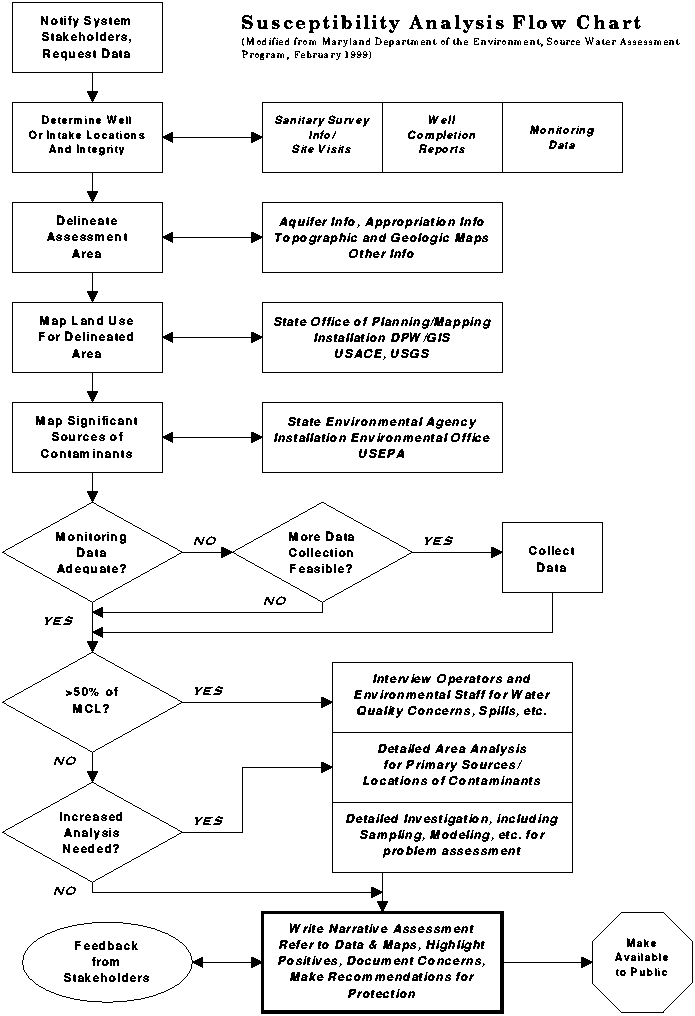


Part 1 - Quick Screening Analysis
This set of documents provides guidance to U.S. Army Installations on
approaches to and procedures for meeting requirements of the 1996 Amendments
to the Safe Drinking Water Act. Public works and environmental staff at all
installations should consider the following questions:
- Does your installation provide drinking water to its personnel,
dependents, or tenants via direct connection from an Army-owned
water utility?
- Does your installation provide drinking water to its personnel,
dependents, or tenants via direct connection from a contractor-owned
water utility?
- Does your installation provide drinking water to its personnel,
dependents, or tenants via direct connection from an external
(e.g. municipal) water utility?
- Does your installation provide drinking water to its personnel,
dependents, or tenants via bottled or tanked water from an external
water utility?
- Do any installation activities have known detrimental impacts, or have
reasonable potential to have such impacts, upon the quality of any of
the above water supplies?
- Do any installation activities have known detrimental impacts, or have
reasonable potential to have such impacts, upon the quality of any
other water supplies?
If you answered "Yes" to questions 1-4, a State Source Water Assessment will
have to be prepared for your installation
water supply. In some cases the State may request that the water supplier
complete the assessment. Installation
environmental staff will need to work closely with and provide pertinent
data to their state or to other water suppliers.
If you answered "Yes" to question 5 and/or 6 the State will require that a
Source Water Protection Plan be prepared for the
affected water supply. Your required level of involvement in preparing the
plan will depend on ownership of the water utility,
as follows:
- If you answered "Yes" to question 1, a plan will be prepared by your
respective state using information supplied directly by your
installation; or the state may request that the installation actually
complete a plan based on state guidance.
- If you answered "Yes" to questions 2-4, you may be asked by your water
supplier for information that they will include in their plan or
supply to the state. In cases where an installation adds another level
of treatment to purchased water, that installation may be requested
by the state to complete a sub-plan that will supplement the
water supplier's plan.
Source Water Assessment and Protection Plans will range from simple to
complex. The required detail of the plan will depend on the size of a water
utility system (customers served), types of potential pollutants, location of
potential pollutants versus surface intakes and wells, and overall risk of
contaminating the water supply. The following flowchart presents a
simplified view of the process leading to a written plan.

Front Page 
Last modified: 08 Mar 1999 gtf






